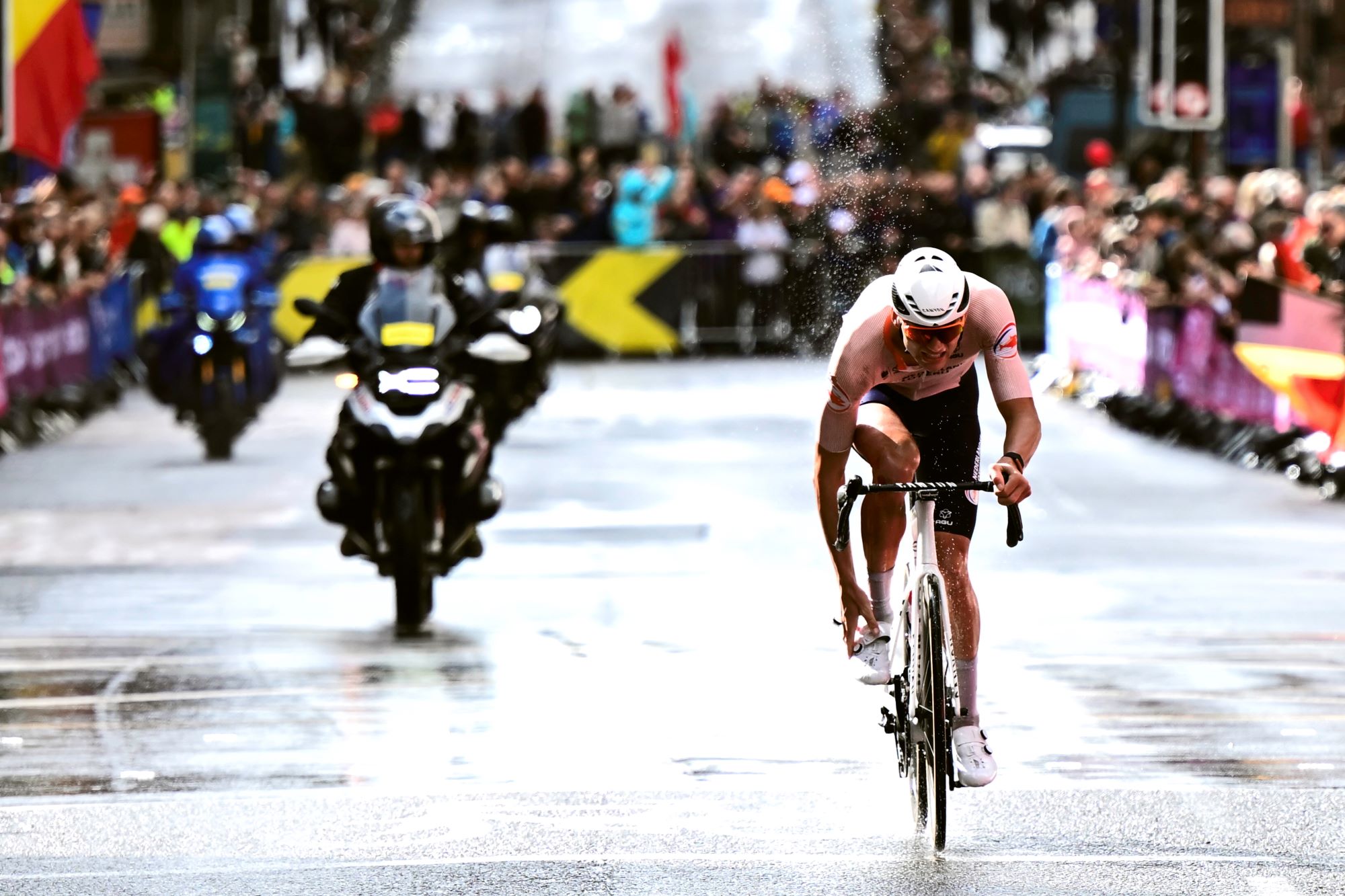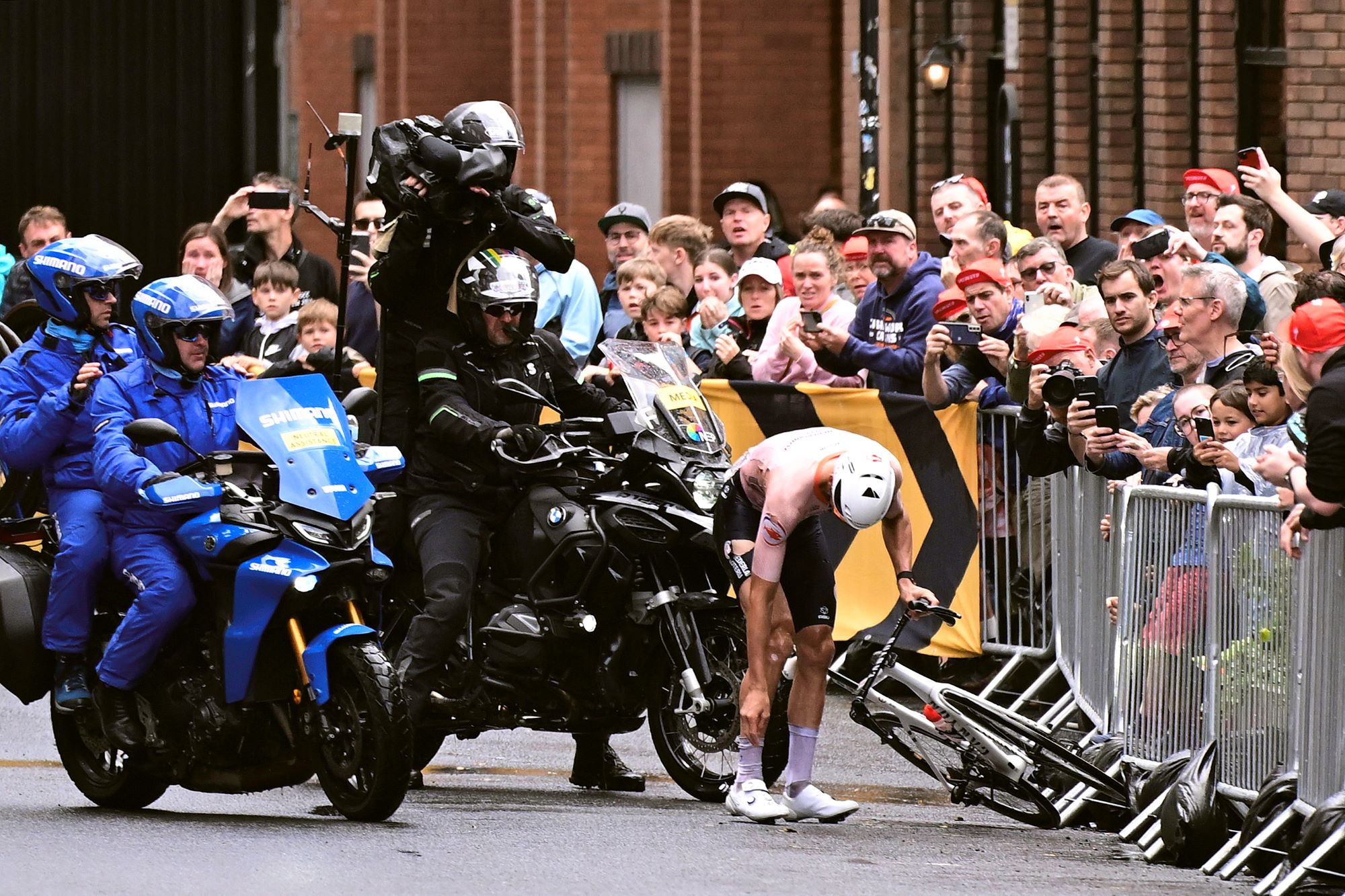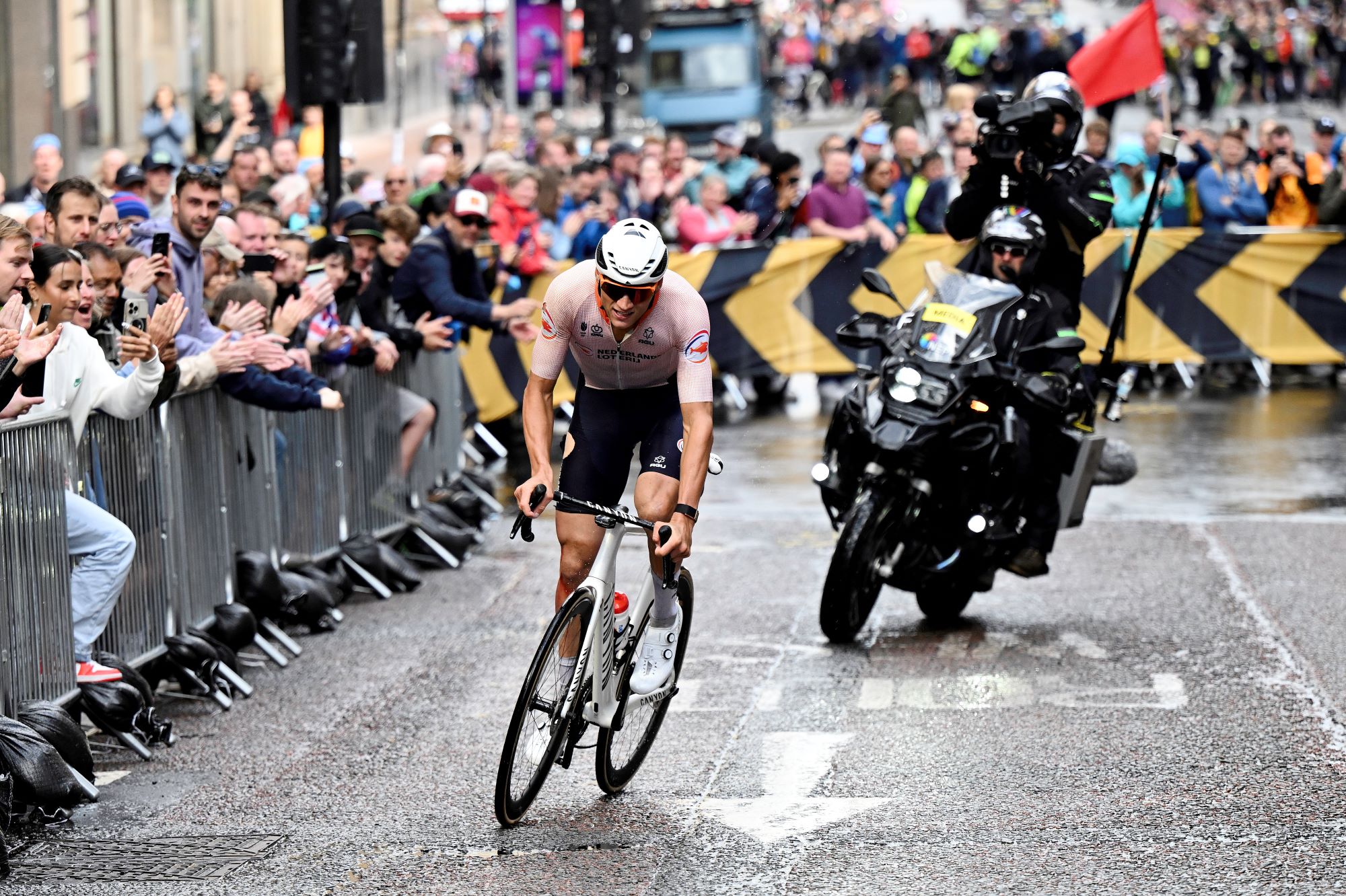
Koos Moerenhout, the coach of the Dutch elite men, was just as shocked as the majority of cycling fans and journalists when Mathieu van der Poel won the elite men’s road race at the World Championships with a broken shoe.
Van der Poel suffered a heavy fall in the closing stages of the race as he slipped out on a corner that had become slick on the Glasgow city centre circuit. However, he swiftly remounted his bike and continued to power to victory.
Not long after television pictures of the race appeared to show him snapping the Boa dial off his shoe which had become broken in the incident.
It also later emerged that one section of his cleat had snapped clean off in the crash.
Speaking to Cycling Weekly, Moerenhout said that he couldn’t wrap his head around how Van der Poel had still managed to get back on and manage to put enough power through his pedals to seize the rainbow jersey.
“I really can't explain how he did that,” Moerenhout said. “I’ve no clue there but he managed to do it. Always when a crash happens you never know: is the bike damaged? Are the shoes damaged? That's all high tech stuff of course. If you fall the wrong way, then easily you run into a problem and luckily he could still use his bike.
“With a bit of adjusting he could at least put some power through his shoe and finish the job. It's a hectic moment once that happens. You're full of adrenaline and there's only one way to go.”
It's a reaction most cyclists have,” he added. “Am I okay? Is the bike okay? and then they just go again. Of course, you have to be a bit lucky that the bike is still working after a crash and stuff, but even with that you could still see he was the best man on the bike at that stage.
“He kept gaining ground and there was no doubt about it that he was going to finish it off at that point.”
"You don't know how it's going to turn out after a crash"

Moerenhout explained that difficulty with radio communication at the world championships made the moment even more hectic and much more of a heart in mouth moment. Riders competed in the road race without the usual radios that would be at their disposal in races for their trade teams.
“We knew he was ahead, but we didn't know exactly with how many seconds,” he explained. “We heard he crashed and then it was like, ‘oh s***!’ to put it mildly, and luckily, quickly, the message came down that he was back on his bike. Then almost immediately his next time gap was about 20 seconds so that was kind of comforting.
"Then again, we also saw images of him obviously adjusting his shoe, you don't know how it's going to turn out there and there wasn't a moment that we could pass to get to him.
“But then listening to the race radio, he was gaining time, again, from 20 to 30 seconds and the other three riders in the chase looked worn out, it was already pretty clear that the best man was in front.”
“Once his gap was about 50 seconds, we could start moving up to him and then the last five or six kilometres was like kind of a victory lap for him, staying up the street and also enjoying the moment and for us, it was just intense but beautiful to watch.”

Moerenhout told Cycling Weekly that having a rider as diverse as the flying Dutchman in his squad meant that matching the incredibly strong Belgian team wasn’t as formidable a task as it may have seemed.
“Not every generation is blessed with spectacular cyclists like him,” Moerenhout said. “He's just so versatile and can basically do everything on the bike.
"He’s an almost perfect cyclo-crosser, a really good mountain biker and of course such a great road rider.
“With races on the road, you know, there are so many options for him to win a race because he's fast in a sprint but he is also not afraid about attacking and also attacking really early.
"So that of course gives him a tactical advantage. Other than that he’s just supremely talented and always eager to show what he can do whatever race he lines up at.”





!["[T]he First and Fifth Amendments Require ICE to Provide Information About the Whereabouts of a Detained Person"](https://images.inkl.com/s3/publisher/cover/212/reason-cover.png?w=600)

